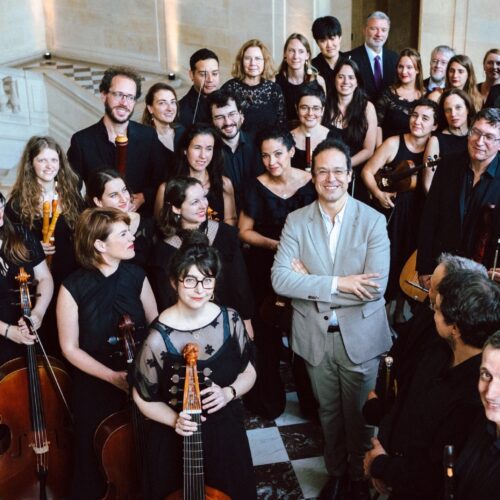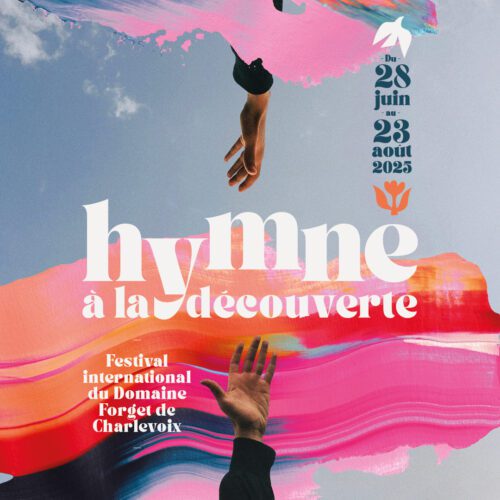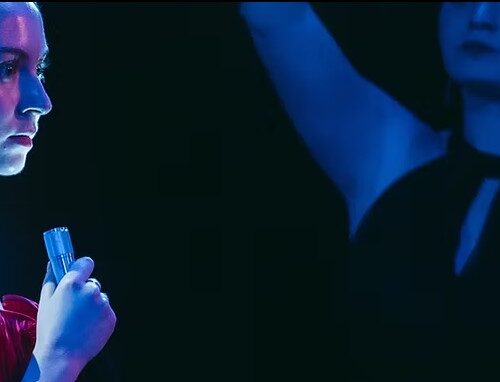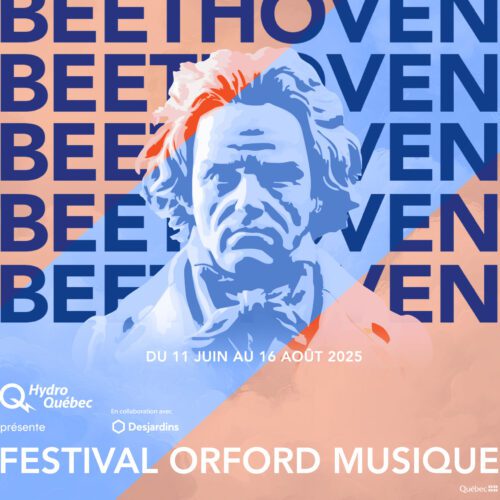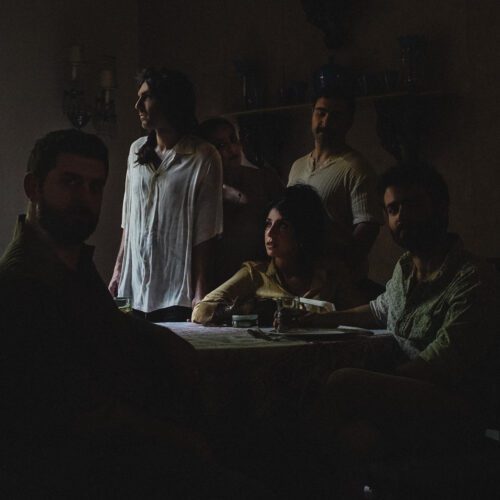Additional Information
Built around the exceptional legacy of Claude Vivier, who tragically died 40 years ago, the program of La Semaine du Neuf ends up with the ensemble Paramirabo performing (notably) the piece “Paramirabo”, this Friday at the Conservatoire de musique de Montréal. PAN M 360’s guest is Paramirabo’s musical director and also the artistic director of Groupe Le Vivier, whose name was chosen for the reasons one can imagine. Thus, under the direction of flutist Jeffrey Stonehouse, Paramirabo ensemble explores two works by the late composer as well as two others by eminent composers who were also his teachers: Karlheinz Stockhausen and Gilles Tremblay.
PAN M 360: You have built this Semaine du Neuf around Claude Vivier, one of the most played Quebec composers in the great constellation of contemporary music on an international scale. This is your first signature as artistic director and we can guess why you chose this theme. What do you think about it?
JEFF STONEHOUSE: The idea is to create an event around a theme. This year it’s Claude Vivier and for future editions it will be something else. I like the idea of themes that are linked to a composer or another art form. A theme can be a trigger and generate a ripple effect. So, never rule out the potential to reach the audience by offering them something that interests people.
PAN M 360: For the benefit of our audience, please remind us why the Paramirabo ensemble is called that.
JEFF STONEHOUSE: The founding members of the group met over this piece, and that’s why we have the name. We were actually students (at the Conservatoire de musique de Montréal) in the contemporary music class of Véronique Lacroix. We studied this piece, we played this piece. For me, it was my first point of contact with Vivier through this work. Afterwards, it really opened a lot of doors for me because I listened to all of his repertoire and I realized how much it was coming for me. This is also the case with Paramirabo, the ensemble.
PAN M 360: We see that this program has regular members and guests.
JEFF STONEHOUSE: There’s nothing here for the full band – Paramirabo is a sextet. Here, we break into subgroups to play works by Vivier, Stockhausen and Tremblay, with whom Vivier had studied.
PAN M 360: What do you think are the intrinsic qualities of Paramirabo, the work itself?
JEFF STONEHOUSE: What’s interesting about Paramirabo is that the flute-violin-cello trio is really treated as if it were one “organism”. So we observe several motifs in homorhythm, the blend is very important, the rhythmic precision too. The piano is here an almost solo instrument, it has its own part. One of the things that always strikes me about Vivier’s music is the mixture of complexity and almost childlike motifs. In Paramirabo, it is through the whistling of the musicians that this more childlike tone is given. Also, the three musicians (flute, violin, cello) evoke a bit of liturgical or religious music, like a Gregorian chant emanating from the three instruments that become one.
PAN M 360: This sudden candor in Vivier, these more playful moments relax the listener after the more dense passages, more rooted in the idea of Western contemporary music.
JEFF STONEHOUSE: In Vivier’s music, there’s definitely an emotional side that’s present. Because there’s also this fascination with death and a little bit of tragedy that you hear as well. It is slightly less present in Paramirabo than in some of the others.
PAN M 360: Since we’re talking about Vivier, we’ll talk right away about his piece Proliferation, which is the conclusion of the program and the title of your concert. After that, we’ll go to Stockhausen and Tremblay.
JEFF STONEHOUSE: Proliferation is a very interesting work. It has the presence of the Ondes Martenot played by Daniel Agnès. The instrumentation is a bit strange and it gives a very particular flavor. It is a challenge for the musicians to set up but also to understand the score, these open sections that require choices among the performers.
PAN M 360: Now, if we look at the interventions of each one in this and the collective work. How do you see all of that in this context, in the interpretation that you want to do?
JEFF STONEHOUSE: Yeah, I’m definitely speaking for the colleagues here because there’s no flute in this one. I would say that the collective sound is treated differently from Paramirabo. Proliferation is a work that comes early in Claude Vivier’s repertoire – late 60s. And so the style is a little different. I was saying that at the end of the 70s, his style became more precise and we discovered music more typical of his work as we perceive it today. With Proliferation, we see a different period of the composer.
PAN M 360: Let’s move on to the works in the middle of the program, first Stockhausen’s Refrain.
JEFF STONEHOUSE: The connection is obvious: Vivier was a student of Stockhausen. The instrumentation of Refrain… it’s something! Piano, vibraphone, woodblocks, celesta, composed a little earlier than Vivier’s piece, but with similar instrumentation. And so what I find interesting is that there is a texture with a short refrain that comes back. The textures are almost transparent and the audience can perceive them along the way, which makes it a very different work.
PAN M 360: The other work on the program is by Gilles Tremblay, who is part of the first generation of contemporary music in Quebec, we’re talking about Pierre Mercure and other Serge Garant.
JEFF STONEHOUSE: Yes I would say that it is the door of the European music in Quebec. For me, it’s mostly through Gilles Tremblay. I love Triojubilus. David Robbins and I have played it 3 times in the last few years. It’s a work with strange instruments. Here we have the flute and an assortment of cowbells of all sizes – over 40 of them! It really produces an effect where you feel the gamelan music. There’s really something special about the resonance of the cowbells – you could call it something else… Triojubilus is one of the works influenced by Asian percussion music, including the Balinese gamelan. The structure is interesting. It opens with a rather furnished flute solo, then the harp and the cowbells really act together in homorhythm. In Tremblay’s music, there are also playful moments, games between the performers. For example, the harpist has to respond as quickly as possible to the interventions of the percussion. This creates almost comical moments at times, where the musicians can play tricks on their interlocutors.
PAN M 360: These four works create a beautiful corpus and revive the work of Vivier and his colleagues. We’re finally waking up!
JEFF STONEHOUSE: In Quebec, I think we are a little slow to wake up. In Europe, for example, his work “hits” much more than here. I also know a broadcaster from Toronto (Soundstreams) who has made his career largely on adaptations of Claude Vivier’s music. He tells me that in Europe, he has no problem imposing this repertoire because there is a real interest. Vivier is one of the well-known composers who are accepted in contemporary music programs. I have been in Quebec for 15 years and I had never heard Bouchara until the opening night of the Semaine du Neuf!
TO CLOSE THE SEMAINE DU NEUF, THE PARAMIRABO ENSEMBLE PERFORMS THIS FRIDAY, 7:30 PM, AT THE CONSERVATORY OF MUSIC OF MONTREAL
INFOS & TICKETS HERE
PROGRAM
- Claude Vivier: Paramirabo , 1970
- Karlheinz Stockhausen: Refrain , 1959
- Gilles Tremblay: Triojubilus , 1985
- Claude Vivier: Prolifération , 1968 – 1969 (rév. 1976)
PARTICIPANTS
- PARAMIRABO
- JEFFREY STONEHOUSE (flute)
- AYSEL TAGHI ZADA (violon – guest musician)
- VIVIANA GOSSELIN (cello)
- PAMELA REIMER (piano – guest musician)
- DAVID THERRIEN BRONGO (percussions)
- DANIEL ÁÑEZ (celesta, ondes martenot)
- ROBIN BEST (harp – guest musician)



